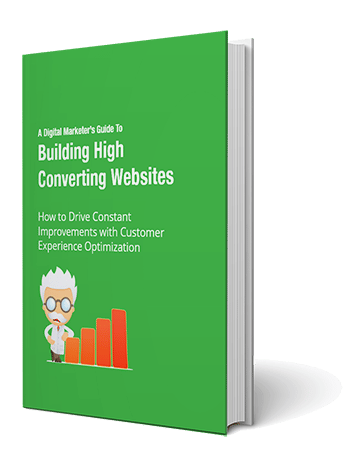Your ability to engage with your audience, no matter where they are, impacts your brand, your customer awareness in the marketplace, and ultimately the growth of your business. Being able to analyze and improve the customer experience across all of your digital channels is critical to improving sales.
Captivate Your Visitors and Customers
Creating new content takes up a lot of time and resources whether it is text, graphics, or video. As the number of platforms your customers use (desktop, tablet, phone, glasses, watches, gaming consoles, TV) continues to increase, so does their ability to engage with your brand.
The best brands are able to keep up with these changes, no matter where they occur because they have adapted their processes to handle anything new. Content is created so that it can operate anywhere. But simply being able to publish this content anywhere isn’t enough. Without an understanding of how customers interact with your brand in each channel, you are blindly creating content without understanding its impact on your audience.
Customer Experience Optimization is Your Key to More Conversions
Why would you want to understand how customers experience your brand? Well, it is one of the keys to understanding visitor behavior and sentiment toward your brand. One way marketing is no longer nearly as effective is because of social media. Because buyers and influencers expect so much more from organizations, our ability to engage with our audience and fans must be measured.
- Increase Conversions. Increase customer engagement leads to more purchases and conversions.
- Customer Insights. We gain more insights into the mind of the customer.
- Create Fans. Engaging with visitors and customers leads to more fans.
- New Opportunities. New insights into new opportunities will arise when we engage in customer conversations.
Guide to High Converting Websites
Want to build a Customer Experience Optimization Team? We outline 5 steps to make that happen and build a website that will convert more visitors into customers.
Why Is Customer Engagement Optimization Important For Your Business?
Customer engagement optimization is important for several reasons.
Most importantly, it directly impacts customer satisfaction. When businesses focus on improving the customer experience, they can meet and exceed customer expectations, leading to higher levels of satisfaction which means higher sales. Satisfied customers are more likely to become loyal, repeat customers and recommend the business to others.
By improving the customer experience, optimization can impact customer loyalty and retention. By providing exceptional experiences, businesses can build strong relationships with their customers, increasing their likelihood of staying with the brand. Loyal customers not only generate consistent revenue but also tend to spend more over time.
By optimizing the customer experience a businesses can gain a competitive advantage. In today’s crowded marketplace, where products and services can be similar, the customer experience can be a key differentiating factor. By delivering superior experiences, businesses can stand out from their competitors and attract new customers.
A positive customer experience helps to build a strong brand reputation. When customers have enjoyable interactions with a brand, they are more likely to share their experiences through positive word-of-mouth, online reviews, and social media. This positive reputation can attract new customers and enhance the overall perception of the brand.
Customer experience optimization contributes to increased customer lifetime value. By providing a seamless and satisfying experience at every touchpoint, businesses can encourage repeat purchases and drive customer loyalty. This, in turn, increases the value derived from each customer over their lifetime.
Finally, customer experience optimization can lead to cost savings. When customers have a positive experience, they are less likely to require extensive support or customer service. This reduces the costs associated with handling complaints and resolving issues. Additionally, retaining existing customers tends to be more cost-effective than acquiring new ones, making customer experience optimization a valuable investment.
What Tactics Are Used in Optimizing a Digital Customer Experience?
There are several tactics commonly used in customer experience optimization. Here are some of them:
- Customer Journey Mapping: Customer journey mapping involves visualizing and understanding the end-to-end customer experience across various touchpoints and interactions with the business. It helps identify pain points, opportunities for improvement, and areas where a customer needs and expectations can be met more effectively.
- Personalization: Personalization involves tailoring the customer experience to individual preferences, needs, and behaviors. This can be achieved through data analysis, segmentation, and targeted messaging or offers. Personalization creates a more relevant and engaging experience for customers, increasing their satisfaction and loyalty.
- Omni-channel Integration: Omni-channel integration ensures a seamless and consistent customer experience across different channels and devices. It allows customers to switch between channels (such as online, mobile, in-store) without disruptions, providing a cohesive experience. Integration also enables the sharing of customer data and context between channels for a more personalized experience.
- User Experience (UX) Design: UX design focuses on creating intuitive, user-friendly interfaces and interactions. It involves optimizing website navigation, minimizing friction, and ensuring a smooth and enjoyable user journey. UX design aims to simplify processes and make it easy for customers to find information, make purchases, or interact with customer support.
- Customer Feedback and Surveys: Gathering customer feedback through surveys, feedback forms, or social media listening is crucial for understanding customer perceptions and identifying areas for improvement. By actively seeking and acting upon customer feedback, businesses can address issues, implement necessary changes, and show customers that their opinions are valued.
- Training and Empowering Employees: Well-trained and empowered employees play a vital role in delivering a positive customer experience. Investing in employee training programs that focus on customer service skills, empathy, and problem-solving can enhance interactions with customers. Empowering employees to make decisions and resolve issues promptly can lead to more personalized and efficient customer experiences.
- Continuous Improvement: Customer experience optimization is an ongoing process. Regularly reviewing and analyzing customer data, feedback, and metrics allows businesses to identify trends, measure the impact of changes, and make data-driven decisions. Implementing a culture of continuous improvement ensures that the customer experience remains a priority and evolves with changing customer expectations.
- Customer Support and Responsiveness: Providing timely and effective customer support is crucial for a positive customer experience. Promptly addressing customer inquiries, concerns, or issues through various support channels (such as phone, email, live chat) demonstrates attentiveness and care. Implementing self-service options and chatbots can also enhance responsiveness and provide instant assistance.
These tactics are not exhaustive, and the specific strategies used for customer experience optimization may vary depending on the industry, business size, and target audience. The key is to align these tactics with the unique needs and preferences of the customers while continuously monitoring and adapting to meet their evolving expectations.


